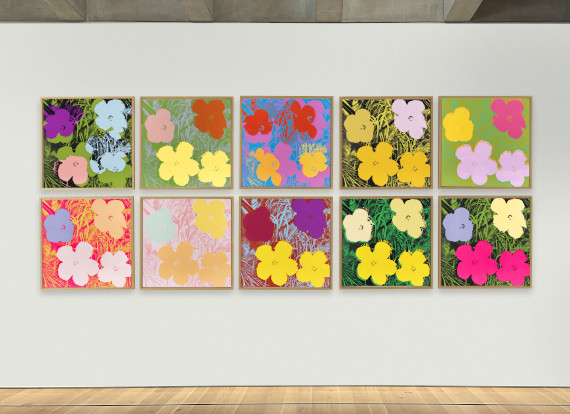Dictionary


Serigraphy
Serigraphy is synonymous with silkscreen printmaking, especially for creative purposes. It can be either a tusche-washout process or a film-stencil process and is a direct technique. As the term silkscreen printmaking implies, paint is pushed through a screen that serves as the printing forme on to the paper or other material to be printed. The most recently developed of all graphic printmaking techniques, serigraphy developed around 1900. However, the technique is really a further development of ancient Asian processes. There are many ways of making the printing or foundry forme, that is, the screen. What they all have in common is that parts of the screen are stopped out to make them impermeable to paint. This can be achieved directly with stencils, with size (glue) or chemical emulsions. The paint is applied directly to the screen and distributed on it with a squeegee. Where the screen is permeable, paint is pressed on to the paper beneath the screen. A great many different screens (each for one particular color) may be used successively in this way, which requires precise fitting to avoid blurring but also affords enormous scope for creative design. Serigraphy can theoretically be repeated as many times as desired without the screen showing signs of wear, which means unlimited editions of such prints are possible. Quite soon after the process was developed, serigraphy was widely used in commercial art. The process was perfected in the US. Not until after the second world war was serigraphy used more frequently by artists, such as Willi Baumeister. Serigraphy attained its zenith in Pop art.
Serigraphy is synonymous with silkscreen printmaking, especially for creative purposes. It can be either a tusche-washout process or a film-stencil process and is a direct technique. As the term silkscreen printmaking implies, paint is pushed through a screen that serves as the printing forme on to the paper or other material to be printed. The most recently developed of all graphic printmaking techniques, serigraphy developed around 1900. However, the technique is really a further development of ancient Asian processes. There are many ways of making the printing or foundry forme, that is, the screen. What they all have in common is that parts of the screen are stopped out to make them impermeable to paint. This can be achieved directly with stencils, with size (glue) or chemical emulsions. The paint is applied directly to the screen and distributed on it with a squeegee. Where the screen is permeable, paint is pressed on to the paper beneath the screen. A great many different screens (each for one particular color) may be used successively in this way, which requires precise fitting to avoid blurring but also affords enormous scope for creative design. Serigraphy can theoretically be repeated as many times as desired without the screen showing signs of wear, which means unlimited editions of such prints are possible. Quite soon after the process was developed, serigraphy was widely used in commercial art. The process was perfected in the US. Not until after the second world war was serigraphy used more frequently by artists, such as Willi Baumeister. Serigraphy attained its zenith in Pop art.
Offers
Headquarters
Joseph-Wild-Str. 18
81829 Munich
Phone: +49 89 55 244-0
Fax: +49 89 55 244-177
info@kettererkunst.de
Louisa von Saucken / Undine Schleifer
Holstenwall 5
20355 Hamburg
Phone: +49 40 37 49 61-0
Fax: +49 40 37 49 61-66
infohamburg@kettererkunst.de
Dr. Simone Wiechers / Nane Schlage
Fasanenstr. 70
10719 Berlin
Phone: +49 30 88 67 53-63
Fax: +49 30 88 67 56-43
infoberlin@kettererkunst.de
Cordula Lichtenberg
Gertrudenstraße 24-28
50667 Cologne
Phone: +49 221 510 908-15
infokoeln@kettererkunst.de
Hessen
Rhineland-Palatinate
Miriam Heß
Phone: +49 62 21 58 80-038
Fax: +49 62 21 58 80-595
infoheidelberg@kettererkunst.de
We will inform you in time.




